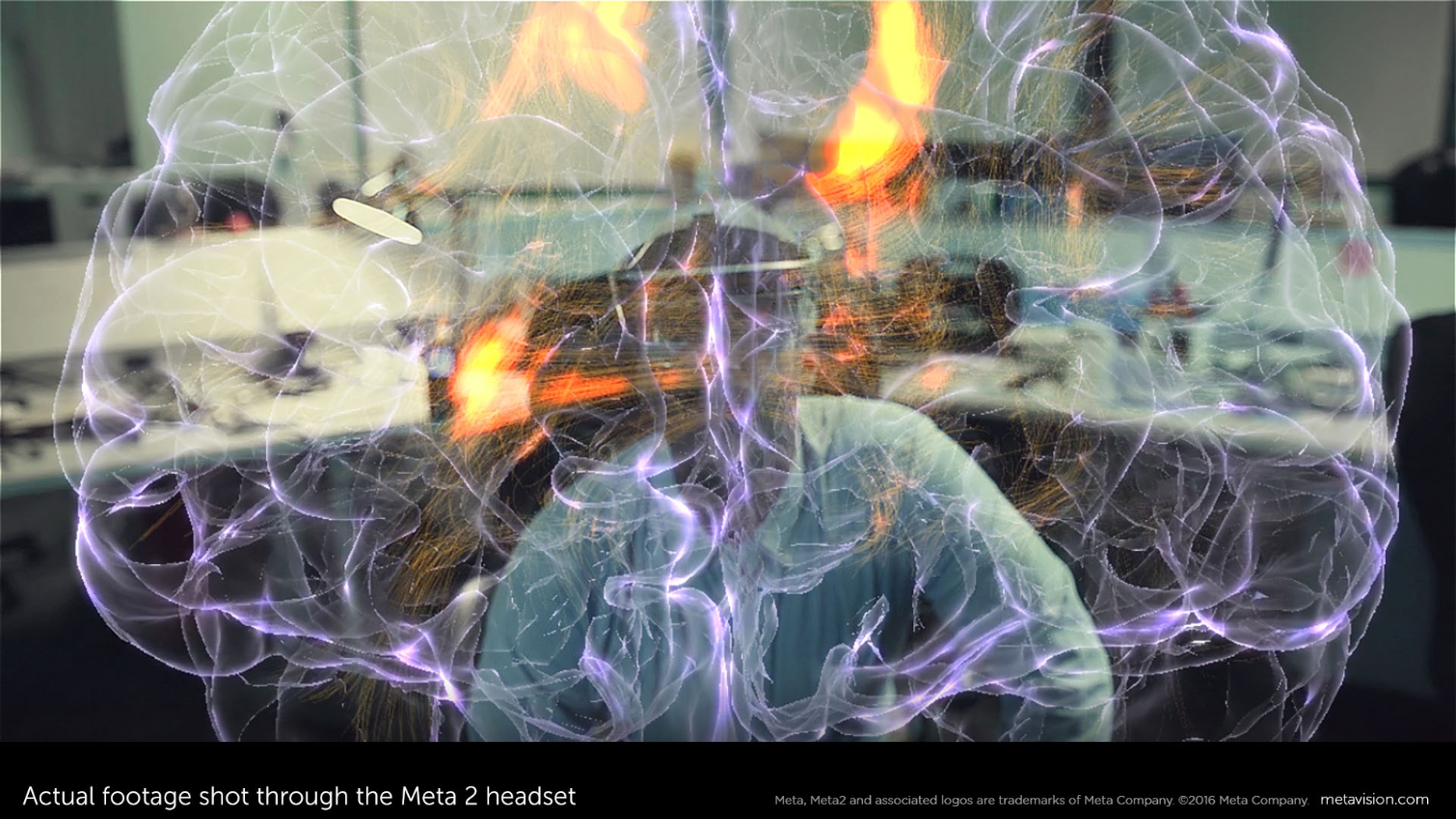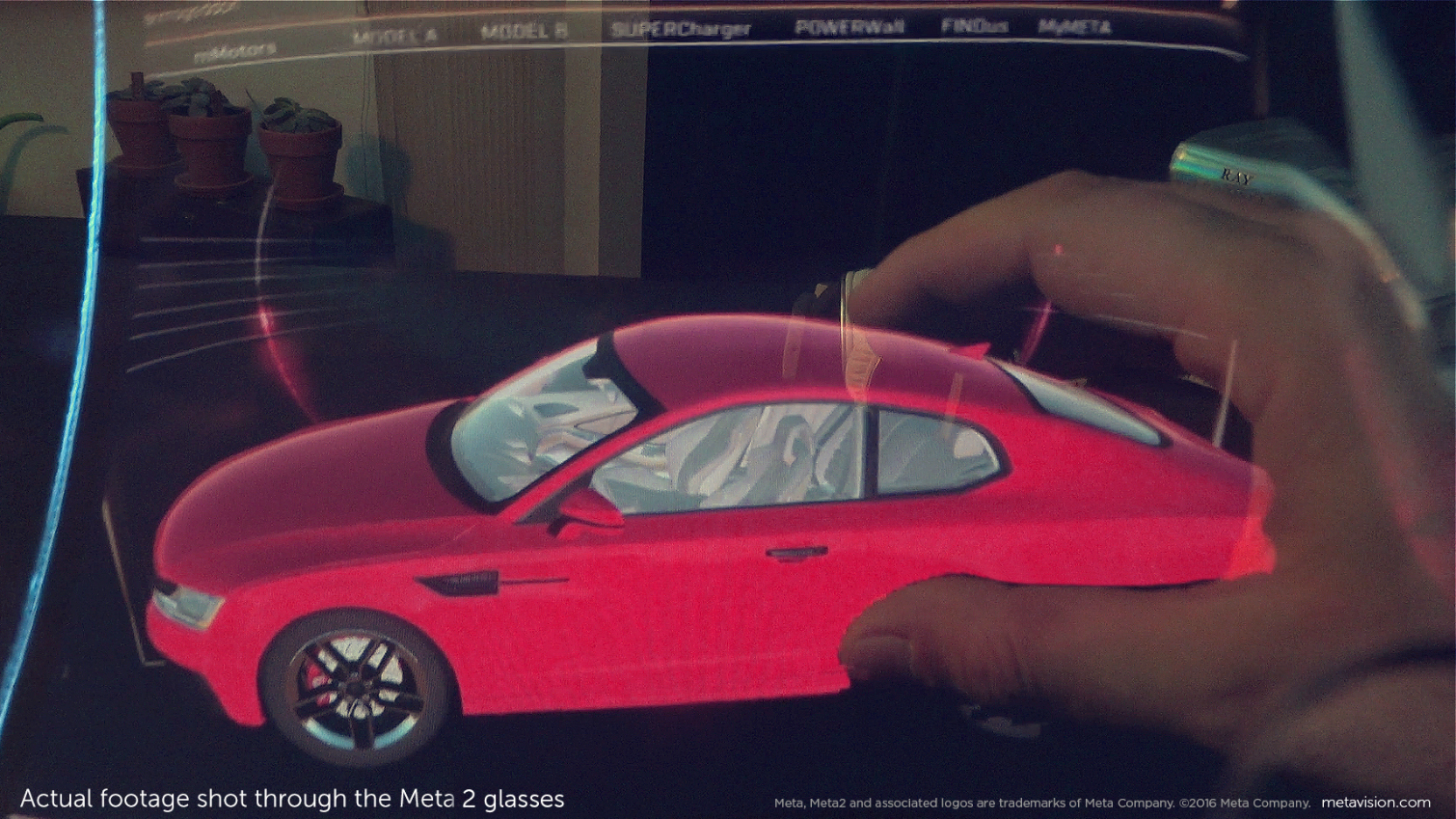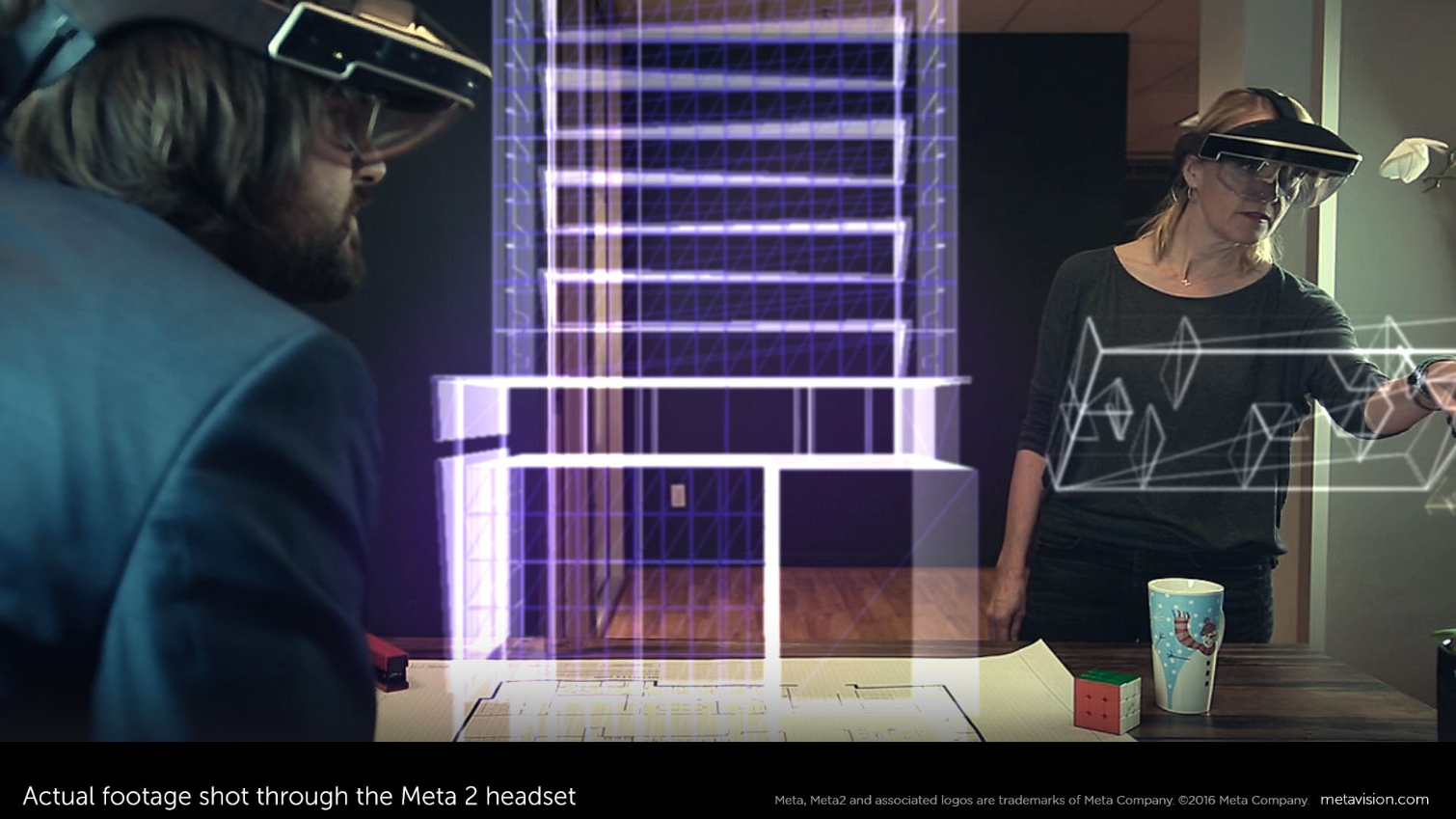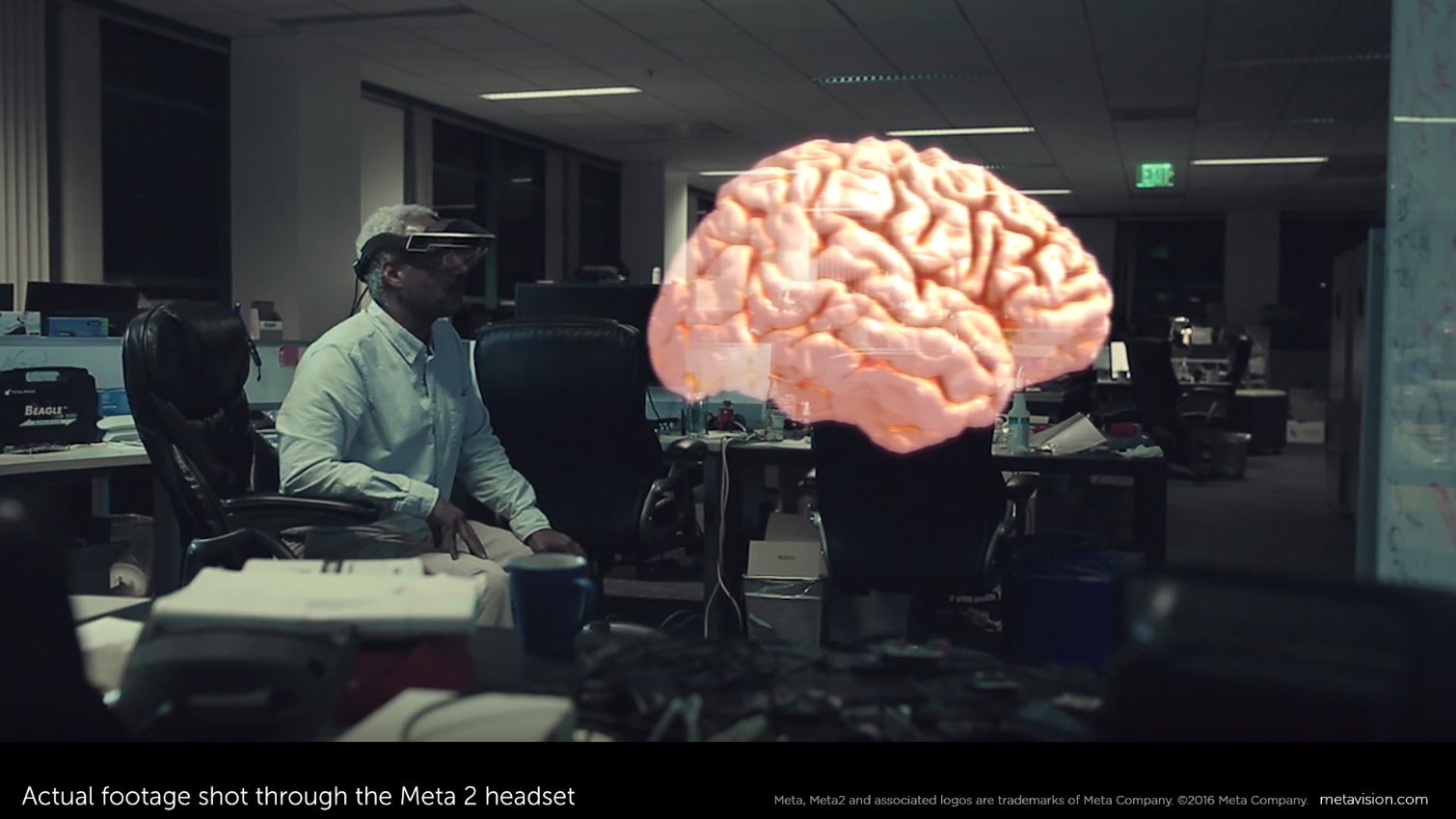Meta 2 Augmented Reality Glasses Portend Brighter, Nearer Future For AR (Updated)
Virtual and augmented reality are going to change the world. There’s no questioning that. However, despite the spotlight that has been shining on VR so far this year, most reports state that in the long-term AR is going to be much bigger than VR. But the reality today is that VR is ahead, with consumer-ready hardware about to ship and full-fledged VR experiences waiting to be had. Meanwhile, AR is still in its early days, with plenty of grandiose promises let down by the fact that the tech just isn’t there yet.
When we tried perhaps the highest profile AR hardware, Microsoft’s Hololens, we didn’t think it was “especially mind-blowing,” and when I tired Meta’s first glasses, the Meta 1 Developer Kit, the experience was a big letdown. My expectations were set too high by what I imagined AR could do, and the Meta 1 came nowhere close to meeting them. It didn’t help that the Meta 1 was built on Epson’s Moverio BT-200 AR glasses, which we also weren’t that impressed with.
At the same time, we have AR companies with sky-high valuations like Magic Leap (which has yet to show a product) making wild promises in dubious demo videos. With the reality check that all these disappointments have brought, it seemed like AR would never take off, at least for now, and it’d be a few more years before the tech reached its full potential.
Then, seemingly out of nowhere Meta was back in the news. Its CEO, Meron Gribetz, presented at the TED Conference in Vancouver last month, and noted “futurist” Robert Scoble (yes, he of Google Glass shower fame) got a preview of what Meta was showing and was blown away, hyperbolically calling it “the most important new product since the original Macintosh.”
Unfortunately, we didn’t pony up the $6,000 to buy a ticket to TED so weren’t able to attend the presentation, but the snippets of info that came out from it looked very impressive, a huge step up from the Meta 1 glasses and perhaps even Hololens. Now a few weeks later, Meta has pulled the sheets off its latest AR headset, the Meta 2 Development Kit. The kit consists of both a new HMD and software development kit, and Meta is taking pre-orders for the Meta 2 Development Kit starting today for $949, with its launch expected in Q3 of this year.
Specifications
| Display | 2560 x 1440 resolution, 90-degree FoV |
|---|---|
| Camera | 720p front-facing camera |
| Sensors | 6-axis IMU, array for hand interactions and positional tracking |
| Audio | Four speaker near-ear audio |
| Connectivity | 9-foot cable for video, data, and power (HDMI 1.4b or DisplayPort) |
| Weight | 420g without the cable and head straps |
| Application Support | - Microsoft Office- Adobe Creative Suite- Spotify |
| System Requirements | - Intel Iris Pro / Nvidia GT 650M / AMD Radeon HD7970(recommend Nvidia GTX 960 / AMD 280 equivalent or greater)- Intel i7-3610MQ equivalent or greater- 8 GB RAM- HDMI 1.4 video output- 1x USB 3.0 ports- Windows 8.1 or newer- 64 bit Unity 5+ on Windows (for development, not end users) |
Hardware Tour
As you can see, the Meta 2’s hardware is much more refined that the Meta 1's, and at first glance it looks a little like Hololens. However, one big difference is that the glasses are still tethered to a PC because they are first and foremost designed for developers – Meta told us that untethered hardware is, of course, the goal for a consumer product. This means that because there is no processing hardware in the HMD, the Meta 2 is lighter (420g vs. 579g) and likely more comfortable than Hololens. The Meta 2 is also designed to accommodate wearing glasses underneath the visor.
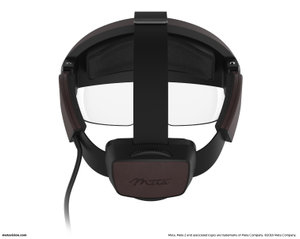
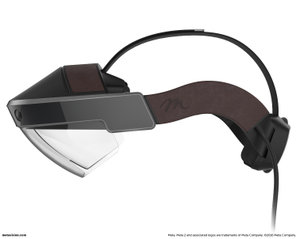
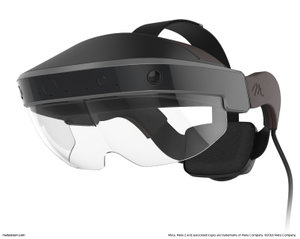
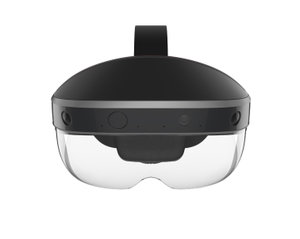
Field Of View Issues Addressed?
Let’s point out first that we haven’t yet been able to go eyes-on with the Meta 2, so everything presented here is based on Meta’s claims. The Meta 2’s biggest hardware breakthrough is its field of view (FoV), which is 90-degrees (diagonal). This a huge step up from the limited FoV of the Meta 1 and Hololens (which are both around 25 degrees) and is closer to what you get from VR HMDs. FoV is probably the biggest gripe people have with Hololens, and at the TED demo, Meta showed that you can see a life-sized human a few feet in front of you when using the Meta 2, something competing AR headsets can’t offer right now.
Get Tom's Hardware's best news and in-depth reviews, straight to your inbox.
Another improvement is the 1440p resolution of the images displayed, and again this is a big improvement over the Meta 1 glasses and even Hololens (which has two HD “light engines”). The sample image below clearly shows the impressive resolution, and Meta told us that all the images provided to us were taken by simply holding a camera up to the Meta 2’s display, so there is no trickery here.
As for the technical details as to how the Meta 2’s display works, Meta stated that it “uses an off-axis optical engine to form images using a single-element half-silver mirror, in which the optical axis of the aperture is not coincident with the mechanical center of the system. Left and right eye images from an [horizontally mounted] LCD panel reflect off the inside of the visor (the half-silver mirror) into the eyes, forming a high-resolution stereoscopic 3D image at 20 pixels per degree, ensuring text readability. As well as being the optical element, the visor is partially reflective, which enables the wearer to see digital information overlaid on the physical world.”
One area that we are not clear on yet is how much better the Meta 2’s positional and surface tracking is compared to the Meta 1. We were told that it currently uses SLAM (simultaneous localization and mapping) that works with the Meta 2’s sensor array (Meta has not disclosed the tech this array uses), which from what we understand offers basic positional tracking. However, this interesting blog post from former Meta developer Brennan Hatton says that Meta is working on improved positional and surface tracking for the Meta 2 that will likely be incorporated before its Q3 ship date. We are unsure how this will compare to other AR offerings like Hololens.
“The Neural Path of Least Resistance”
In Gribetz’s TED demo, he talked about his vision for the above, which is a neuroscience-based interface design that is supposed to do away with the traditional ways we have of interacting with technology. With the Meta 2 glasses, this means that its controls are all gesture based, but instead of mimicking actions we use with physical input devices like mice and keyboards, Meta uses natural hand interactions like grabbing to interact with objects, as in the screenshots below.
When I tried the Meta 1, I found its hand tracking to be quite rough, but from what we can see the Meta 2’s tracking is substantially better, and now your hands actually occlude the digital objects. Despite the improvements, from what we can see, the Hololens and systems like Leap Motion’s Orion have much better hand-tracking that the Meta 2 currently has but, again, keep in mind it doesn’t come out until Q3 so there will likely be improvements before the glasses ship.
“You Are The Operating System”
Like Hololens, one of Meta’s goals is to free us from our desktop and having to stare into one (or more) physical displays to get any work done. Meta is working on AR applications that blend the flat information planes of traditional interfaces with more "natural" looking presentations of information, and you’ll be able to interact with this data using mouse and keyboard and hand gestures. Meta hopes that its AR interface will enable “people to easily access, manipulate, and share digital information in ways that are natural and enhance productivity and collaboration.”
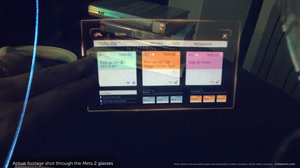
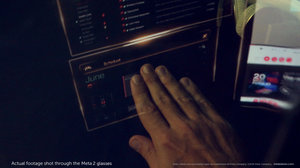
Collaboration is one of the key tenets of AR, in that two or more people wearing the same HMD can be viewing the same content and work on it together, and this is something Meta showed that the Meta 2 is going to easily make possible. This feature should jibe with colleagues working together both in the same physical space and remotely.
Great AR Coming Sooner Than Expected
Today’s announcement shows that Meta is set to become a major player in the AR space (again). After its 2012 founding and successful Kickstarter for its first developer kit, we thought Meta would be a leader in the space, but it fell off the radar last year. We weren’t too impressed with the Meta 1 and thought perhaps Meta’s initial success was a flash in the pan, but it looks like it just went into stealth mode while it worked on its next-generation hardware. The Meta 2 was designed with input from the nearly 1,000 developers who worked with the Meta 1, and it looks like the end result of this input is some very impressive AR hardware. Of course, we’ll need to actually try them out before we can reach any final conclusions.
Keep in mind that the Meta 2 is still a developer kit, so although its $949 price is a far cry from the $3,000 of the Hololens developer kit, this is by no means a product non-devs will be using. You can perhaps look at the Meta 2 as the DK2 of AR – a vast improvement over the first model and something that is likely to offer some amazing AR experiences but not something we’d ever expect a consumer to use.
The Meta 2 SDK is built on top of Unity, which allows you “to create holographic apps quickly and easily with Unity and C#.” The SDK includes SLAM positional tracking, hand tracking with occlusion, collaboration, interface design guidelines, example code, example apps, documentation, and support.
With the Meta 2 glasses not coming out to Q3, we’re not going to claim that today’s announcement has suddenly changed our perspective on where AR is in relation to VR. This year is going to be the year of VR, not AR; however, the Meta 2 (and the just-announced opening of Hololens orders) show that great AR is perhaps a lot closer than we thought.
-
bit_user I'm guessing all synthetic objects appear at a fixed focal plane. Can anyone confirm?Reply



